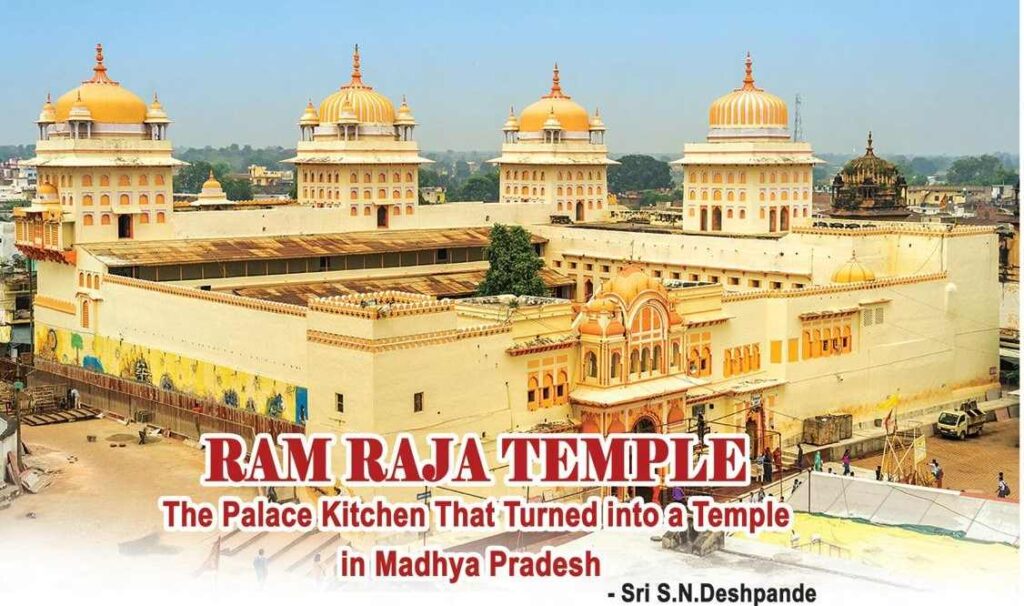Devuni Kadapa – Sri Venkateswara Swamy Temple There are many famous temples in Kadapa District. Devuni Kadapa Sri Venkateswara Swamy Temple is one of the most famous and ancient temples in Kadapa District, Andhra Pradesh. The temple is at a distance of three kilometres away from Kadapa. It is in the area of Kadapa Municipal Read More
Tag: Sita
Sri Rama Raja Temple, Orchha
Sri Rama Raja Temple – The Palace Kitchen that turned into a Temple in Madhya Pradesh We have seen in all of Rama’s Temples, the Lord is shown as standing along with Sita, Laxman and Hanuman sitting on his knees with folded Hands looking at Lord Rama. However in Rama Raja Temple, Orchha, Madhya Pradesh, Read More
Sri Rama Raja Mandir, Orchha
Sri Rama Raja Mandir – The Palace Kitchen that turned into a Temple in Madhya Pradesh We have seen in all of Rama’s Temples, the Lord is shown as standing along with Sita, Laxman and Hanuman sitting on his knees with folded Hands looking at Lord Rama. However in Rama Raja Temple, Orchha, Madhya Pradesh, Read More

